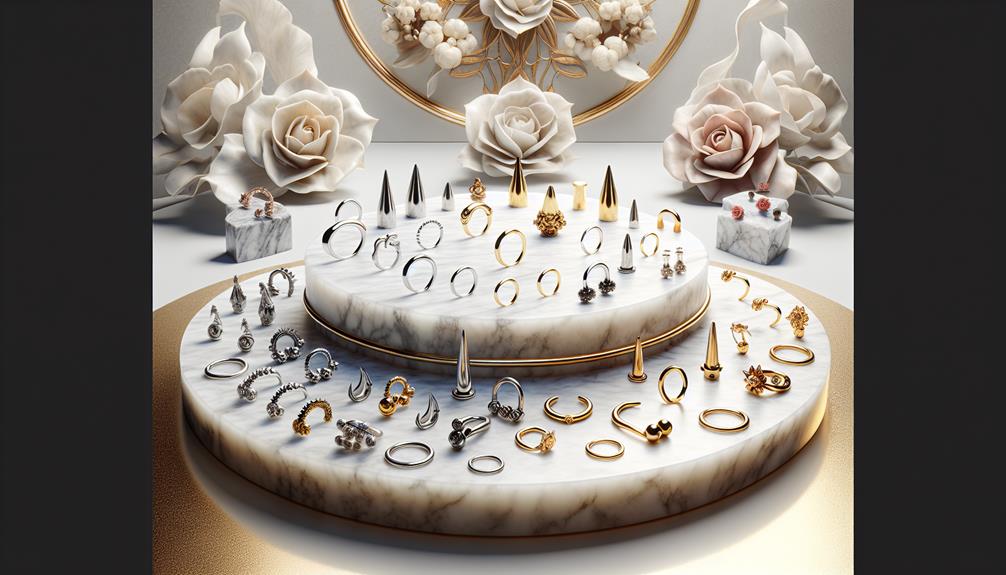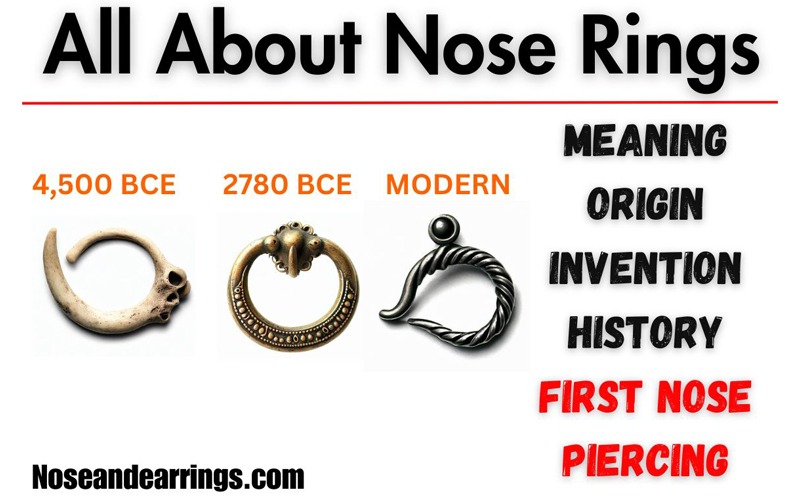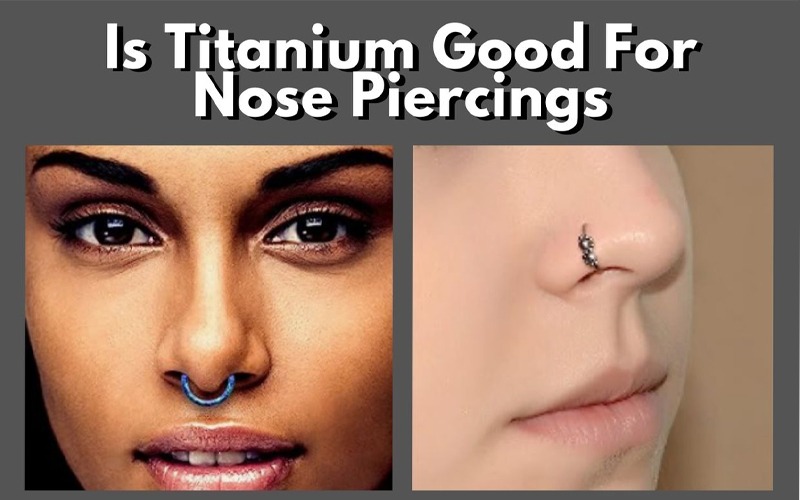In the realm of body adornments, particularly nose rings, selecting the appropriate material is not merely a matter of aesthetics but also of health and comfort. The choices range from the hypoallergenic prowess of implant-grade titanium to the classic opulence of high-karat gold, and each material brings with it a unique set of properties that can influence the wearer’s experience.
As such, the discussion about which material reigns supreme is both intricate and multifaceted. Matters of skin sensitivity, durability, cost, and even the healing process of a piercing must be carefully considered. Thus, the question remains: among the pantheon of available materials, which one truly stands out as the optimal choice for those seeking to adorn their nose with minimal risk and maximum satisfaction?
The answer to this question is not straightforward, and it beckons a closer examination of the nuances that define the suitability of each material.
Key Points:
- Titanium is a hypoallergenic and durable option for nose rings, making it suitable for sensitive skin and ensuring a smooth healing process.
- Gold purity varies, with 24K gold being the purest but less durable, while 18K and 14K gold offer a balance between allure and practicality. Gold plated options provide affordability.
- Surgical steel is versatile, hypoallergenic, and recommended for initial piercings. It is practical and affordable, accommodating various design preferences.
- Platinum offers unparalleled luster, hypoallergenic qualities, and exceptional resistance to wear and tear. It is a luxurious choice that ensures comfort, durability, and freedom from skin irritation.
Exploring Titanium Benefits
Implant-grade titanium stands out as an optimal choice for nose rings due to its hypoallergenic properties and exceptional durability. For individuals who value their freedom to express themselves without the constraints of allergic reactions and skin sensitivities, a titanium nose ring offers an ideal combination of style and comfort. Known for being implant certified titanium, this material is frequently used in medical procedures, signifying its trustworthiness and the high standards it meets, specifically the ASTM F-136 certification.
Considered hypoallergenic, implant-grade titanium is a safe metal that caters to even the most sensitive skin, ensuring that the healing process of a new piercing is smooth and uncomplicated. Unlike some metals that can trigger allergic reactions, titanium provides peace of mind, allowing one to flaunt their piercing without the worry of discomfort or health risks.
Besides its biocompatibility, implant-grade titanium is also resistant to corrosion, assuring that the beauty of your precious metal lasts through various environmental exposures and daily wear. This resilience also means that a titanium nose ring can be a constant in one’s life, embodying the freedom of expression and permanence in style.
In comparison to other metals like gold or surgical stainless steel, titanium strikes a balance between affordability and premium quality. While not as soft as gold and more accessible than platinum, it delivers the same luster and luxury appeal at a more economical price point, ranging from $10 to $20. For those seeking a reliable and high-quality option for their nose jewelry, implant-grade titanium stands as a testament to freedom, health, and enduring elegance.
Understanding Gold Purity
When selecting a gold nose ring, it is crucial to understand that the purity of the gold, measured in karats, directly influences the piece’s color, durability, and overall value. The higher the karat, the purer the gold, and the more vivid the radiance that reflects your desire for freedom and self-expression.
Gold is not just a metal; it’s a symbol of elegance and timelessness. However, pure gold is soft and often not practical for daily wear. This is where understanding gold purity becomes essential:
- Karats and Purity:
- *24K Gold* – 99.9% pure gold and has a rich, warm yellow tone.
- Offers a sumptuous glow that conveys luxury and prestige.
- Less durable and more prone to bending, making it less ideal for nose rings that require resilience.
- *18K Gold* – Composed of 75% gold mixed with 25% metal alloys for increased strength.
- Balances the allure of gold with practicality, suitable for an active lifestyle.
- *14K Gold* – Contains 58.3% gold, offering even greater durability.
- Ideal for those seeking gold jewelry that can withstand daily rigors.
Different hues like yellow gold, rose gold, and Gold Plated options allow for personalization while maintaining the essence of gold. Gold Plated pieces provide a golden appearance at a more accessible price point, while implant grade metals ensure biocompatibility and comfort.
Hallmarks are a testament to quality metal, denoting the authenticity of your gold nose ring. Whether you favor the soft blush of rose gold or the classic sheen of Yellow gold, understanding gold purity equips you with the freedom to choose a nose ring that resonates with your identity and values.
Surgical Steel Versatility
Surgical stainless steel, recognized for its hypoallergenic properties and resistance to corrosion, presents a practical and affordable option for those seeking durable nose ring materials. As a champion of versatility, surgical steel caters to individuals who covet freedom in their choice of body jewelry, without the worry of frequent replacements or damage.
The specific varieties of surgical stainless steel, notably 316L and 316 LVM, are heralded by the Association of Professional Piercers as top contenders for initial piercings. These grades are engineered for bodily insertion, combining the necessary toughness with a gentleness that minimizes the risk of causing allergic reactions. While surgical stainless steel does contain a small amount of nickel, it’s typically bound so tightly within the alloy that it rarely poses a problem, even for those with sensitivities.
For enthusiasts exploring the best metals for nose rings, surgical steel stands out as a material that harmonizes cost-effectiveness with quality. Its solid reputation for safety and reliability makes it a mainstay in the realm of body piercing. Whether for initial piercings or long-term wear, the adaptability of surgical stainless steel accommodates a plethora of designs, catering to a diverse range of aesthetic preferences.
The Allure of Platinum
The unparalleled luster and hypoallergenic qualities of platinum elevate it to a status of opulence and safety in the realm of nose ring materials. Those who choose platinum nose rings not only invest in the metal’s radiant beauty but also in the assurance of comfort and durability. It’s the metal that grants wearers the freedom to express themselves without the worry of skin irritation or the presence of nickel, which is often a concern with other metals.
Platinum stands out as one of the best metals for nose rings, coveted for its exceptional luster that captures the light with every turn, creating a subtle yet captivating sparkle that draws the eye. Its distinguished weight speaks to its density and the substantial feel of quality nose jewelry.
In addition to its visual appeal, platinum is renowned for its hypoallergenic properties, ensuring that it remains kind to your skin, even in the face of constant contact with body fluids. It also boasts superior resistance to wear, maintaining its allure despite the rigors of daily life.
Priced between $40-$200, platinum nose rings represent a luxurious choice for those who prioritize freedom from the common concerns that accompany body piercings, such as potential skin irritation and the need for frequent replacements. The allure of platinum lies in its promise to remain a steadfast companion through the years, its gleam undiminished and its commitment to skin safety unwavering. This metal not only adorns but also preserves the integrity of the piercing, embodying the epitome of what many seek in their pursuit of the perfect nose jewelry.
Risks of Cheap Materials
While the splendor of platinum offers an unmatched combination of beauty and hypoallergenic comfort, the allure of lower-priced nose ring materials often conceals the potential risks and complications they bring to the piercing experience. For those who value their freedom to express themselves without the burden of adverse skin reactions, understanding the risks of cheap materials is crucial.
Plastic, nylon, and acrylic options promise a rainbow of inexpensive variety but fail to meet the mark of safety. Not only do these materials wear down swiftly, compromising their aesthetic appeal, but they also fall short in sterility, potentially jeopardizing the healing of a new piercing.
Similarly, plated metals like vermeil and gold-filled may tempt with their affordability, but as the plating thins, the underlying metal—often less noble—can emerge to irritate and inflame.
Sterling silver, although often deemed a middle-ground choice, carries its own set of pitfalls. Not entirely nickel free, it contains a small amount of nickel, which along with its propensity to tarnish in response to body fluids, can lead to allergic reactions and impede the healing process. This is particularly concerning for those with fresh piercings, who require metals that support, rather than hinder, recovery.
Nickel’s reputation as a provocateur of allergies is well-established, marking it as one of the worst metals for nose rings. Its inclusion in inexpensive metal alloys underscores the perils of skimping on quality for something as intimate as a nose piercing.
The pursuit of freedom in personal style should not come at the cost of health; selecting nickel free, biocompatible materials ensures your expression remains uninhibited by the discomfort and risks associated with substandard metals.





